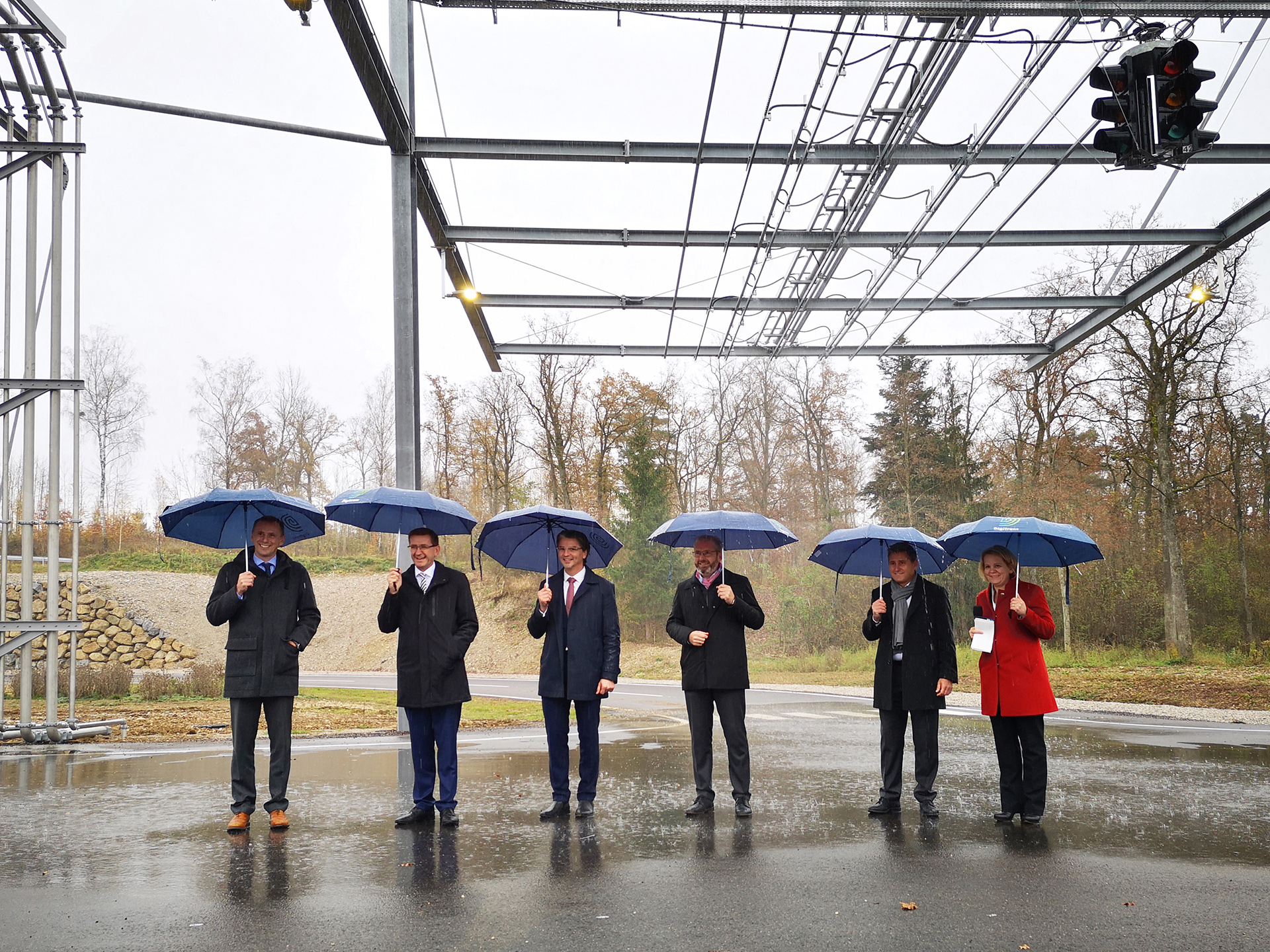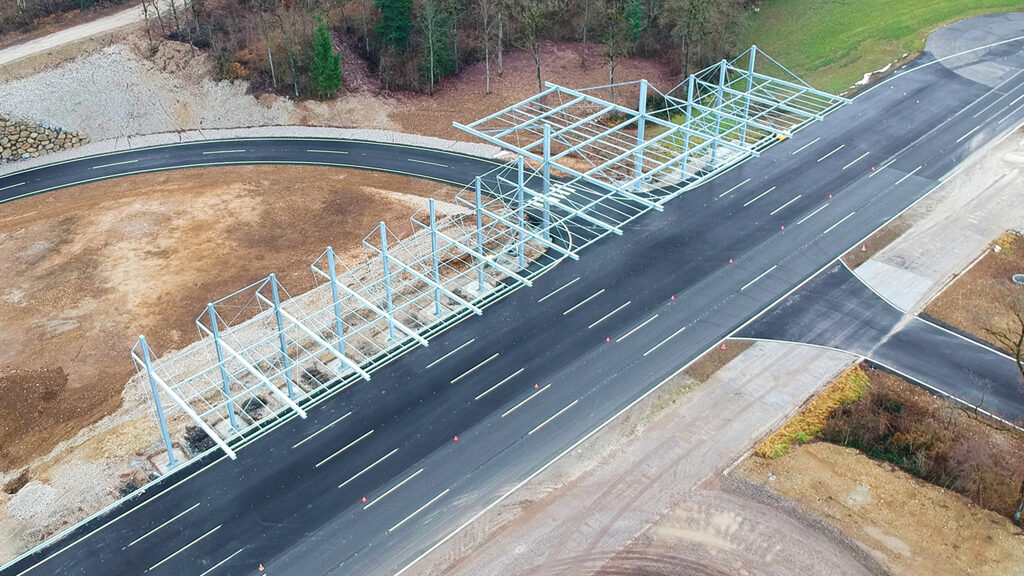Two years in the making, a unique outdoor rain testing facility opened in November at the Digitrans Test Center for Automated Driving. It can reproduce natural rain with different intensities and droplet size distributions – at the push of a button.
“We identified a demand for testing of sensors, detection algorithms and full vehicles in harsh – rainy – conditions, in various scenarios including low- and high-speed crossing situations. The need for the outdoor plant comes with the demand to simulate the spray of vehicles overlayed to rain from above,” comments Dr Christoph Feichtinger, director of R&D, Digitrans.
Its basic construction consists of several specially predefined nozzles mounted to a big steel construction. The nozzles are located to produce a homogenous rain field with pre-defined natural rain intensities and droplet size distribution as well as droplet fall velocity.
To ensure it is eco-friendly, the Digitrans rain plant uses pure ground water without additives that can easily seep back into the ground. Furthermore, by using a local supplier and manufacturer to construct the facility, transportation and assembly effort was kept to a minimum. Located in the heart of Europe with easy access by train, very little traveling is required to get to the facility.
Digitrans believes its resource is truly unique for multiple reasons, as Feichtinger says, “There are plants in which the water falls from above. However, there is a huge difference in the height from which the rain falls, the form, droplet size and homogeneity, the intensity and droplet fall velocity that the water hits the ground, the test targets, vehicles and sensors. There is no known plant that can reproduce defined, natural rain with the appropriate intensity, homogeneity and droplet size outdoors.”
He goes on to note that the systems and tools used do not provide a realistic replication of natural rain. “Up to now, it has often been only possible to perform these tests in indoor facilities at low lengths and heights and at low speeds. The scenarios that can be tested indoors on such systems may be very limited.”

Weather forecast
During the development of the resource, Digitrans performed benchmarking research of rain generation. After being unable to find a satisfactory solution or a provider of such a rain system, it did its own research on natural rain. That included interviews with experts from meteorology, agricultural and garden irrigation, sprinkler and fire extinguishing suppliers, measuring equipment manufacturers and research institutions – giving a clear picture of the complexity of reproducing natural rain. Studies of the influence of different types of rain on automotive sensors such as radar, camera and lidar were also carried out. All in all, Digitrans undertook a large-scale research and development project, including a battery of tests, before the rain plant was built.
One notable difficulty posed by the project was the fact that the plant is outdoors – in addition to pure reproduction of rain, other environmental conditions, especially wind, must be emulated. “The influence of wind on artificially produced, natural raindrops was investigated in theoretical considerations and principal tests, and incorporated into the specification and planning of the rainfall system,” Feichtinger says. “The measures developed function as planned and enable the plant to operate fully.”
 According to Feichtinger (left), interest in the new facility has been overwhelming. In the first few weeks after commissioning, it had an extremely high utilization rate. Free slots are currently available for 2023 and the plant is available for rent on a half-day or full-time basis supported by a test engineer.
According to Feichtinger (left), interest in the new facility has been overwhelming. In the first few weeks after commissioning, it had an extremely high utilization rate. Free slots are currently available for 2023 and the plant is available for rent on a half-day or full-time basis supported by a test engineer.
Technical specifications:
Height: 10m
Length: 100m
Width: 6m
Shape: The asset’s ‘T’ shape means that rain can be produced on three arms of the intersection, including the path of flight of the sensor rays between the arms. The intersection is regulated with traffic lights with a C-ITS interface.


